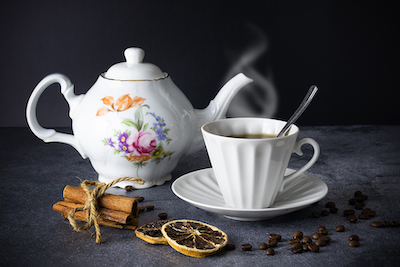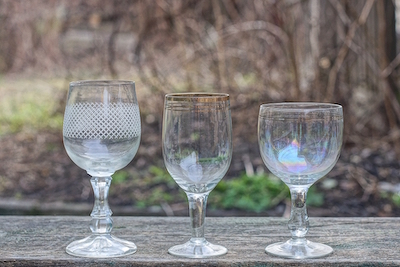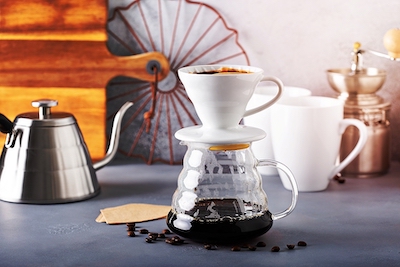Ceramic and porcelain are versatile materials widely used for dishes and tiles in homes around the world. These materials possess unique properties that make them suitable for various applications. But how do they differ from each other? In this article, we will compare ceramic and porcelain regarding their properties, usage, and benefits for dishes and tiles to help you make an informed decision.
Ceramic and Porcelain: A Brief Overview
Ceramic is a general term that refers to materials made from clay, which are hardened by heat. The process of making ceramics involves molding the clay into the desired shape and then firing it at high temperatures, usually between 1,000 and 1,300 degrees Celsius. This results in a durable, non-metallic, and often porous material. Porcelain, on the other hand, is a specific type of ceramic made from a refined white clay called kaolin. It is fired at even higher temperatures, typically between 1,200 and 1,400 degrees Celsius, resulting in a dense, strong, and vitreous material.
Dishes: Ceramic vs Porcelain
- Aesthetics and Design
Ceramic dishes often have a rustic, handmade appearance that many people find appealing. These dishes are available in various colors, textures, and patterns, making it easy to find a set that complements your home’s décor. Porcelain dishes have a more refined, elegant look, characterized by their smooth, glossy finish and often intricate designs. The translucency of porcelain sets it apart from other ceramics, lending a sense of sophistication and grace to your dining table.
- Durability
Porcelain dishes are generally more durable than ceramic dishes due to their higher firing temperatures and denser composition. This makes them less prone to chipping, cracking, and staining. However, ceramic dishes are still considered sturdy and long-lasting, provided they are made from high-quality materials and properly maintained.
- Weight
Ceramic dishes tend to be heavier than porcelain dishes due to their thicker construction and higher clay content. If you prefer lightweight dishes, porcelain may be a better choice for you.
- Microwave and Dishwasher Safety
Both ceramic and porcelain dishes are typically microwave and dishwasher safe. However, ceramic dishes with metallic accents or hand-painted designs may not be suitable for use in microwaves or dishwashers. It’s essential to check the manufacturer’s recommendations before using your dishes in these appliances.
Tiles: Ceramic vs Porcelain
- Water Absorption and Resistance
One of the most significant differences between ceramic and porcelain tiles is their water absorption rate. Porcelain tiles have a lower water absorption rate (less than 0.5%) than ceramic tiles (typically around 3%). This makes porcelain tiles more resistant to moisture, staining, and frost, making them a better choice for areas exposed to water, such as bathrooms, kitchens, and outdoor spaces.
- Durability and Strength
Porcelain tiles are denser and more durable than ceramic tiles due to their higher firing temperatures and refined composition. This makes them less susceptible to wear, chipping, and cracking, even in high-traffic areas. However, high-quality ceramic tiles can still provide long-lasting performance in residential applications, especially when properly installed and maintained.
- Ease of Installation
Ceramic tiles are generally easier to cut and install than porcelain tiles due to their softer composition. This can make them more appealing to DIY enthusiasts or homeowners looking to save on installation costs. Porcelain tiles, on the other hand, often require specialized tools and techniques to cut and install, which may increase the overall project cost.
- Aesthetics and Design Options
Both ceramic and porcelain tiles are available in a wide range of colors, patterns, textures, and finishes, providing endless design possibilities for your home. However, porcelain tiles often have more consistent color and pattern throughout their thickness, which can make chips and scratches less noticeable over time. Additionally, advancements in digital printing technology have enabled manufacturers to create porcelain tiles that closely resemble natural materials like wood, stone, and marble, giving you more design options without sacrificing durability.
- Maintenance
Both ceramic and porcelain tiles are relatively low-maintenance, requiring only regular sweeping and mopping to keep them clean. However, due to their lower water absorption rate and greater stain resistance, porcelain tiles may require less frequent deep cleaning or sealing, especially in wet or high-traffic areas.
- Price
Ceramic tiles are generally more affordable than porcelain tiles, making them a popular choice for homeowners on a budget. Porcelain tiles, while typically more expensive, offer greater durability and moisture resistance, which may make them a more cost-effective option in the long run, particularly in areas where durability and water resistance are crucial.
When choosing between ceramic and porcelain dishes or tiles for your home, it’s essential to consider factors such as aesthetics, durability, weight, installation, maintenance, and cost. Ceramic dishes and tiles tend to have a more rustic appearance and are generally more affordable, while porcelain offers a refined, elegant look and superior durability and water resistance. Ultimately, the best choice will depend on your individual preferences, needs, and budget. By understanding the differences between these two materials, you’ll be better equipped to make an informed decision that suits your lifestyle and enhances the beauty and functionality of your home.














